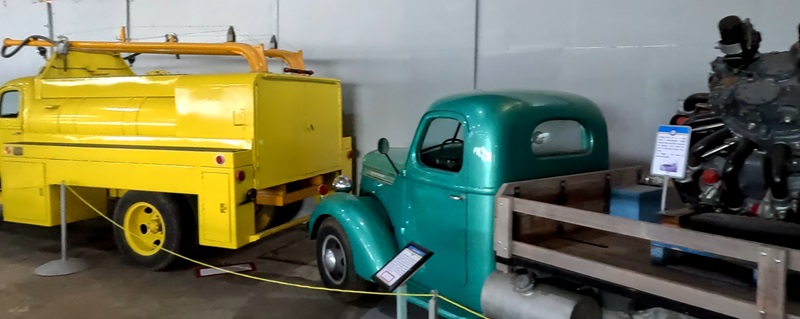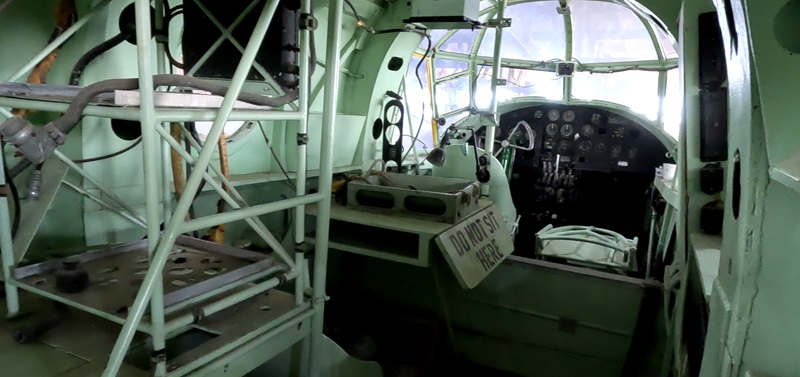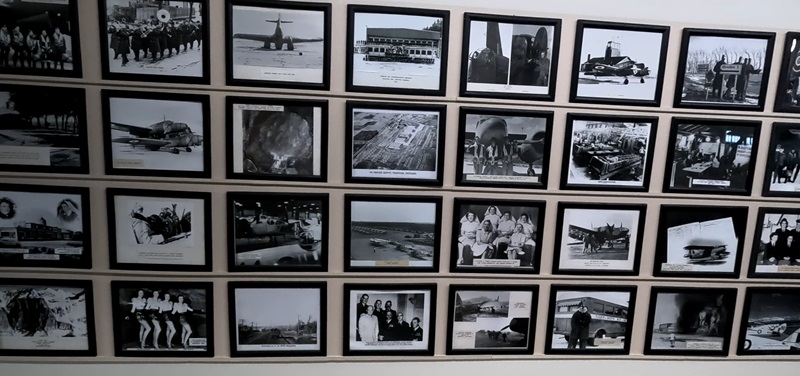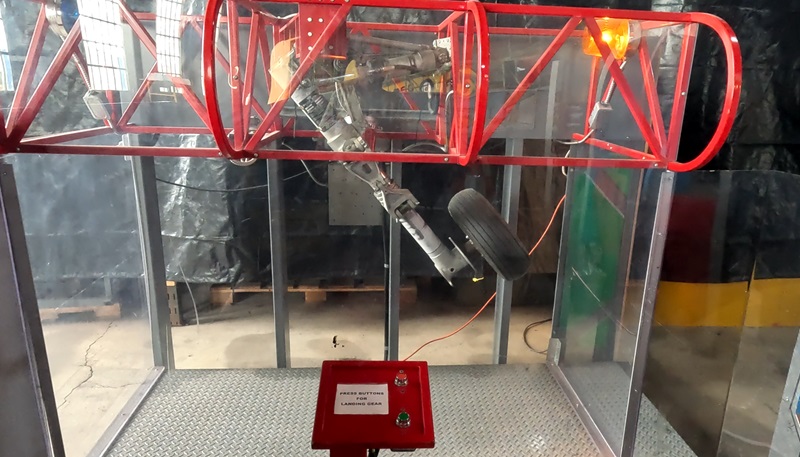Exploring WWII Aviation History at the British Commonwealth Air Training Plan Museum in Manitoba
During our time in Manitoba, Sandra and I uncovered a true gem for history and aviation enthusiasts: the British Commonwealth Air Training Plan Museum & RCAF WWII Memorial. This museum is dedicated to preserving the legacy of the British Commonwealth Air Training Plan (BCATP) and honoring the memory of the aircrew who served during WWII. We were drawn in by its connection to WWII and left thoroughly impressed by the immersive experience it offered. Whether you’re a die-hard aviation enthusiast or just someone who enjoys learning about history, this museum is a must-see.

Why the British Commonwealth Air Training Plan Was Crucial
During WWII, England wasn’t exactly the safest place to be—especially if you were stationed at an airbase. To put it into perspective, imagine England, a country about the size of Oregon, under near-constant threat of bombing raids. Its airspace teemed with enemy aircraft, and key infrastructure like airfields were prime targets. For fledgling pilots, training in such an environment wasn’t just risky—it was nearly impossible because even practice flights carried the risk of running into enemy aircraft..
Enter the British Commonwealth Air Training Plan (BCATP), a groundbreaking initiative that established training bases overseas to ensure the safety of aircrew trainees. These bases trained pilots and aircrew far from the dangers of bombing raids and enemy encounters, giving them the space and security to master the art of flying wartime aircraft.
Canada, with its vast open spaces, secure airspace, and established ties to the Commonwealth, was the ideal choice. This shift not only ensured the safety of trainees but also provided the space and resources necessary to train aircrew on an unprecedented scale.
The BCATP wasn’t just about safety—it was a vital piece of the Allied strategy to achieve air superiority. With aircrew losses mounting on the front lines, the Allies desperately needed a way to replenish their ranks. Canada stepped up, creating over 200 training facilities across the country. Trainees came from across the Commonwealth, including New Zealand, Australia, Great Britain, United States and, of course, Canada. The program was so expansive that it earned Canada the title of “aerodrome of democracy.”
One of those facilities was located at the airfield in Brandon, Manitoba. From 1939 to 1944, this site trained thousands of pilots, navigators, and gunners for the war effort.
By the time the program began winding down in 1944, its impact was staggering: over 167,000 aircrew members, including 50,000 pilots, had completed training. These graduates went on to serve in pivotal operations across Europe, Africa, and the Pacific, cementing the BCATP’s role as a cornerstone of the Allied war effort.
Beyond the numbers, the BCATP left a lasting legacy. The infrastructure built for training—airfields, hangars, and support facilities—formed the foundation of Canada’s modern aviation industry. The program also strengthened ties between Commonwealth countries, proving that global cooperation could yield extraordinary results.
Today, the Commonwealth Air Training Plan Museum & RCAF WWII Memorial in Brandon, Manitoba, preserves this critical chapter in history. The museum offers visitors a chance to step back in time, explore the aircraft and equipment used during training, and appreciate the sheer scale and significance of this global effort.


Trainees came from across the Commonwealth, including New Zealand, Australia, Great Britain, United States and Canada. Initially, the program planned to train up to 50,000 aircrew members annually at 107 bases scattered throughout Canada. By the time the program began winding down in 1944, it had trained over 167,000 aircrew members—including 50,000 pilots.
By the time the program began wrapping up in 1944, over 167,000 aircrew members, including 50,000 pilots, had been through the program.
Even the United States contributed. From mid-1940 to late 1941, American trainers joined the effort to address a shortage of Commonwealth personnel. After the attack on Pearl Harbor, around 1,700 Americans returned to serve with U.S. forces. However, about 5,000 stayed and continued their service as members of the Royal Canadian Air Force (RCAF).
Commonwealth Air Training Plan Museum: What to Expect
The museum is a treasure trove of WWII aircrew training history, with plenty to keep you engaged. The main hangar is filled with restored and in-progress aircraft, support vehicles, and fascinating exhibits that bring the BCATP to life.
- Aircraft Galore: From the graceful Tiger Moth to the impressive Avro Anson, the collection is stunning. Visitors can even peek inside the Avro Anson and get a sense of just how bare-bones these planes were. Comfort? Not exactly a priority back then.
- Restoration Projects: You’ll see aircraft in various stages of restoration, from shiny and polished to “I can’t believe this will ever fly again.” If you’re lucky, the workshop might be open for a behind-the-scenes look at the incredible work done by volunteers.
- Support Vehicles: The hangar also houses fire trucks, fuel tankers, a staff car, and even a tractor. Who knew WWII aviation history in Canada included tractors?
- Interactive Displays: The upstairs exhibit features everything from aircrew gear and uniforms to a fascinating history of RADAR. There’s also a button-operated landing gear demo that’s sure to wow budding engineers.








Additional displays exhibit items ranging from uniforms and historical photographs to a huge outdoor memorial commemorating the names of the fallen.



Aircrew gear and equipment displays are scattered around the facility as well as some dioramas showing significant events from the history of the airbase. Like when a trainee crashed on top of a school.

The upstairs exhibit includes artifacts of the time as well as audiovisual presentations including a pretty interesting one on the history of RADAR.

Walls are lined with history…..

…and there are some photo books available to flip through as well
Interactive Experiences for Visitors

There is a pretty inviting looking kids area with photo opps, pedal car planes and a plane mock up that they can climb into

Passenger or crew, take your pick

And if one of your littles is a budding A&P or future engineer, this landing gear display will be sure to fascinate. The gear extends or retracts with the push of a button so you can see how it works

For the bigger kids, the Cessna Skycrane is set up for entry

You can take up position as either pilot or co-pilot

Although it is a cramped space. At 6’2″ I struggled a bit with the climbing in and out part. I can only imagine how much more difficult it would be when dressed for flying. These aircraft aren’t climate controlled so multiple layers of clothing were a must.
Practical Tips for Visiting
The Commonwealth Air Training Plan Museum is a great activity for anyone interested in aviation in general and even better for anyone who has an interest in WWII-era military aviation. We spent just about 2 hours here. We paid US$11.74 (CDN 15) for 2 adult entries (one Veteran at CDN5).
Where is the Commonwealth Air Training Plan Museum?
Located at McGill Field (Brandon Municipal Airport) in Brandon, Manitoba, Canada
When is the Museum open?
May 1 – September 30: 10 am – 4 pm and October 1 – April 30: 1 pm – 4 pm. Best to call ahead to confirm that they are able to open if the weather is dicey.
What is parking like at the Museum?
Plenty of Free parking is available. There is room to accommodate tour buses and RVs.
What is accessibility like?
The second floor exhibits are not accessible by elevator but the rest of exhibits are on one level and wheelchair friendly. They even have a wheelchair and motorized scooter are available for use by the public! Service animals are permitted. Other pets are not allowed.
How much time should we plan for?
Plan to spend about two hours exploring the exhibits, though history buffs could easily stay longer.
How much does it cost?
Adults: $10.00 ~ Youth (6-17): $5.00 ~ Under 6: free
Current Military/Veterans/University/College (with ID): $5.00
Family rate: $25.00 (max 2 adults).
School Groups: $4.00 per student, min: $25.00 (Bus driver and one supervisor per ten students free. Supervisors must participate in the tour.)
Group tour rates available.
Admission to the RCAF WWII Memorial Wall (outside) is always free.
Yearly museum membership: $30.00 (see below for more!)
Where to Eat Nearby
As an aside, if you’re looking for lunch in the area, Albert’s Bistro is a Greek-themed place not far from the airport that does a fine job. It doesn’t look like much – I mean, when we pulled into the parking lot, Sandra said “Are you SURE about this?” – but we were very happy with the food and service both. They also have mini-golf, go karts and a climbing wall; none of which we took advantage of on this visit.
That’s a Wrap
The Commonwealth Air Training Plan Museum isn’t just about planes and vehicles—it’s about preserving stories of courage and sacrifice. If you’re in Manitoba, this is one stop you don’t want to miss.

